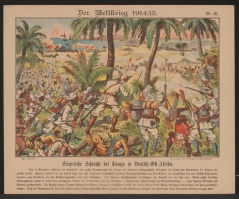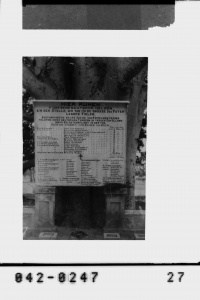Key Figures in the Battle of Tanga↑
The Battle of Tanga was the first major military engagement in the war in East Africa. It involved the British Indian expeditionary force "B" under Major General Arthur Edward Aitken (1861-1924) attacking Tanga in concert with "C" force which attacked the Germans at Longido in the Kilimanjaro region. It was the decisive first action in Paul von Lettow-Vorbeck’s (1870-1964) defence of German East Africa, and the beginning of his legendary military campaign.
Tanga’s Strategic Significance to the Germans and the British Defeat↑
Tanga was strategically important as German East Africa’s most important sea port and the connection to the Usambara railway. Aitken’s advance on Tanga began on 4 November 1914 after his troops had landed three kilometres south of the town. Outnumbered eight to one, the German forces, composed of European officers and African troops (askari), launched a counter attack that ultimatly forced the British to retreat to their boats. As well as being a humiliation for the British, their defeat and hasty retreat left the German troops with an invaluable haul of captured British guns and supplies.
Results of the Battle of Tanga↑
The battle marked a significant setback for the British and forced the War Office to relieve the Colonial and Indian Offices of responsibility for the East African campaign. This meant that the East African front could no longer be dismissed as a local affair. For the Germans, it cemented von Lettow-Vorbeck’s reputation as an effective military commander. Accounts of the battle and the defeat of the British were widely read in Germany after the war.
Mahon Murphy, Trinity College Dublin
Section Editor: Michelle Moyd
Selected Bibliography
- Anderson, Ross: The Battle of Tanga 1914, Stroud 2002: Tempus.
- Paice, Edward: Tip and run. The untold tragedy of the Great War in Africa, London 2007: Weidenfeld & Nicolson.
- Samson, Anne: World War I in Africa. The forgotten conflict among the European powers, London; New York 2013: I. B. Tauris.
- Strachan, Hew: The First World War in Africa, Oxford; New York 2004: Oxford University Press.












